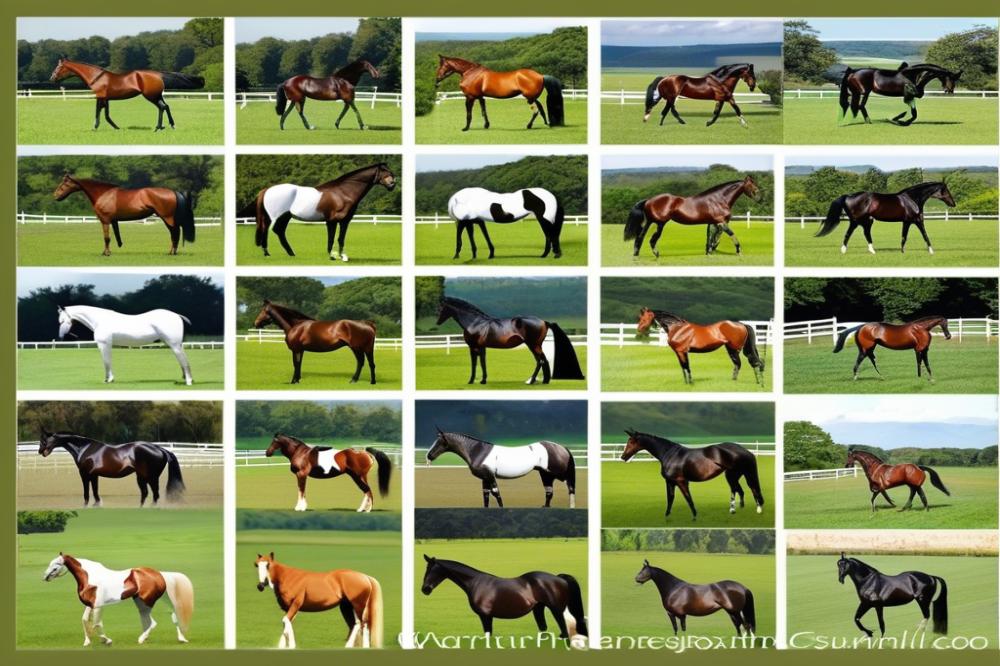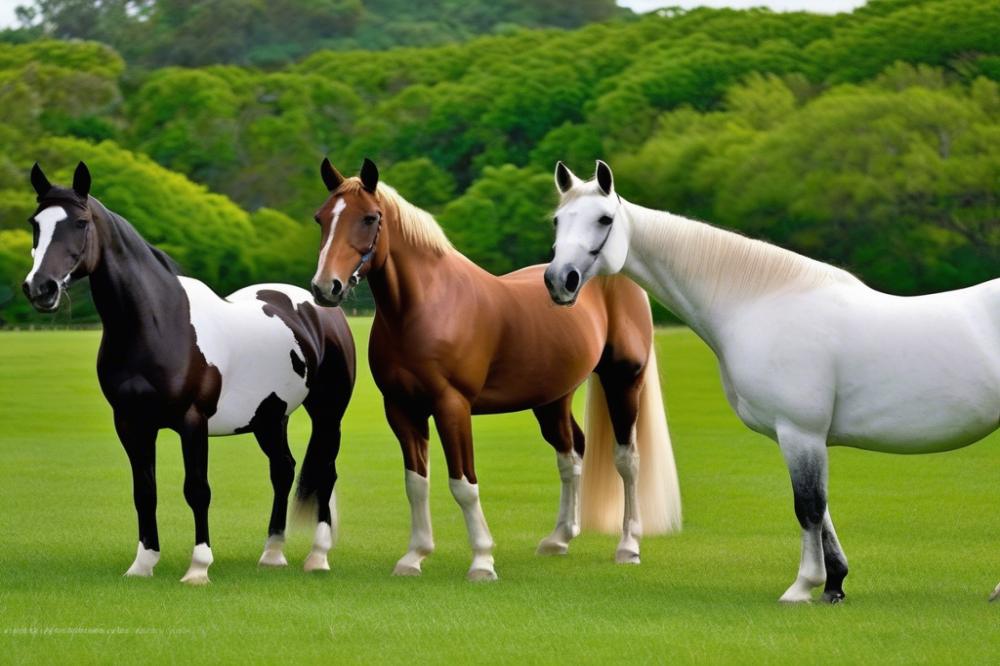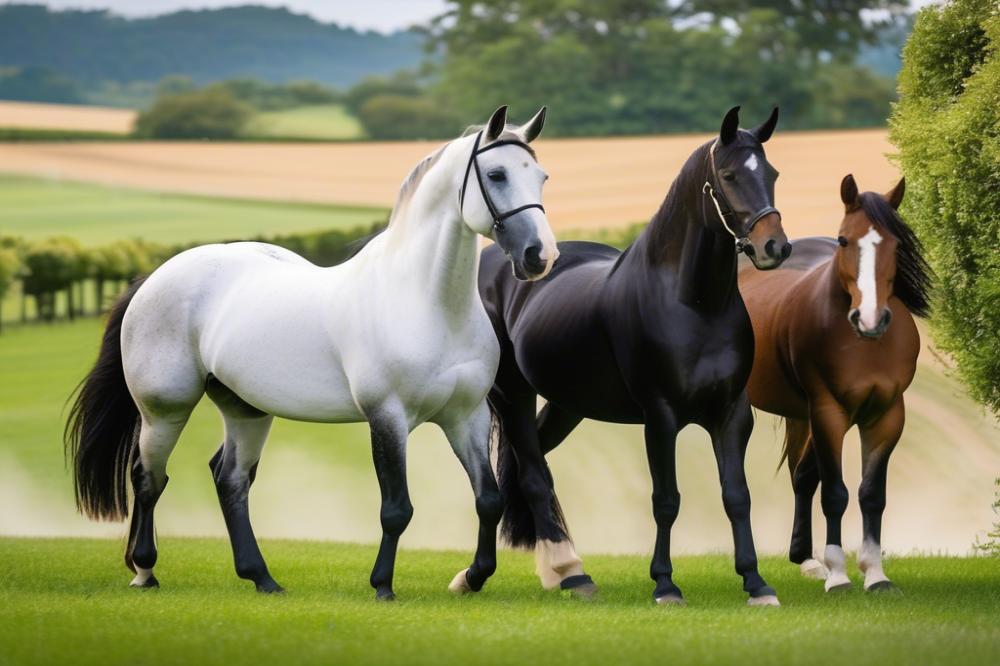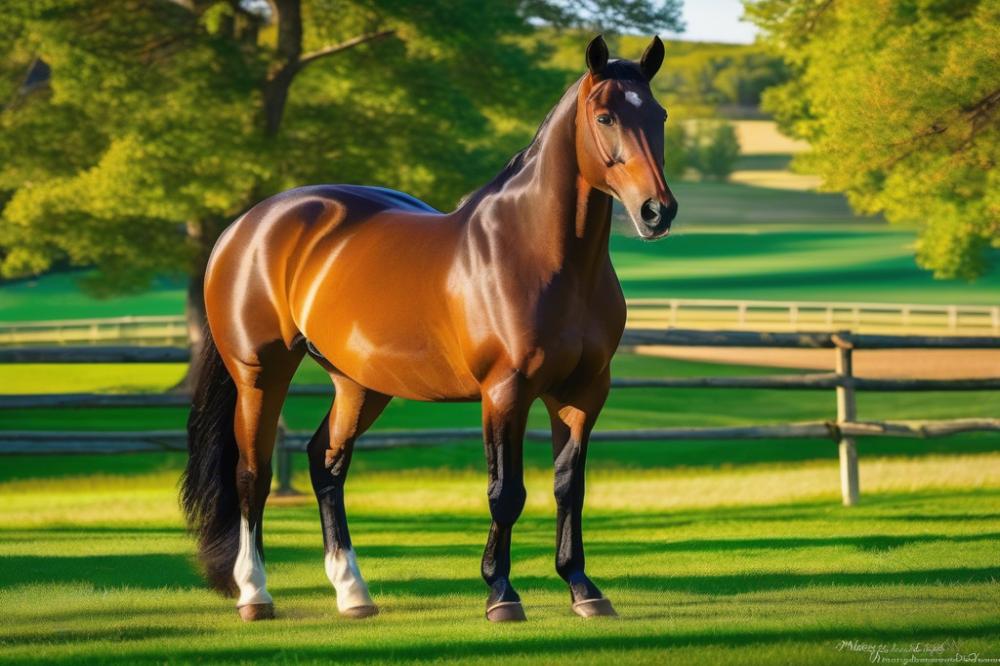Insights into Breeding Warmblood Horses
Warmblood horses are an essential part of the equestrian world. They are known for their athleticism, adaptability, and calm demeanor. These horses excel in various disciplines, including dressage, show jumping, and eventing. Breeders particularly favor them for their performance capabilities and trainable nature. Understanding the significance of Warmblood horses helps highlight their role in competitive riding.
Successful Warmblood horse breeding requires knowledge and skill. Breeders focus on selecting horses with desirable traits to produce the best offspring. This process involves studying bloodlines, conformation, and temperaments. breeding techniques can vary widely, making it crucial to learn from experienced breeders. Their insights can guide newcomers through what can often be a complex journey.
In addition to performance, Warmblood horses are valued for their versatility. Riders of all levels appreciate their willingness and ability to learn. The proper breeding techniques have a significant impact on the horse’s future capabilities. Gaining a deeper understanding of these methods allows breeders to make informed decisions, ultimately leading to more successful outcomes in equestrian sports.
Understanding Warmblood Types

Definition of Warmblood Horses and Their Characteristics
Warmblood horses are a type of equine known for their athleticism and versatility. They generally possess a strong, sturdy body and a calm temperament. Typically, these horses are classified as a mix between hotbloods, like Thoroughbreds, and coldbloods, such as draft breeds. This combination results in a horse that excels in multiple disciplines, from dressage to jumping. Warmbloods often exhibit a willing nature, making them suitable for riders of various skill levels. In addition to their physical attributes, they are known for their smooth gaits and balanced movements.
Popular Warmblood Breeds and Their Unique Traits
Numerous breeds fall under the category of Warmbloods. The Hanoverian is one of the most prevalent. It has a reputation for its excellence in dressage due to its powerful build and trainable mindset. Another noted breed is the Dutch Warmblood, cherished for its athletic ability and athleticism in competition. The Swedish Warmblood, known for its versatility, performs well in both jumping and dressage. Each breed carries distinct traits that can influence their performance and suitability for specific equestrian activities. Understanding these characteristics is essential for anyone involved in breeding.
Importance of Breed Selection in Breeding Programs
Choosing the right breed is vital in a breeding program. Specific traits are desirable for certain disciplines, so breeders must make informed decisions. For instance, a horse bred for show jumping might be selected for speed and agility, while a dressage horse should have graceful movements and a calm demeanor. Each horse contributes to a lineage, affecting future generations. The selection process influences not only the quality of horses produced but also their potential success in competitions. Insight into breeds aids in creating optimal combinations to meet goals in breeding.
Breeding Techniques for Warmblood Horses

When it comes to breeding warmbloods, several methods are commonly used. Artificial insemination is one popular technique. This method allows breeders to use semen from stallions that may be far away. It also allows for better selection, as the semen can be frozen and stored for later use. Live cover is another option. This traditional method involves bringing the mare and stallion together for mating. Each approach has its advantages and disadvantages, depending on the specific goals of the breeder.
Choosing the right match is a critical step. Breeders should consider the qualities of both the stallion and mare. Traits such as temperament, conformation, and athletic ability all play a role. It’s also essential to consider how these characteristics will blend in the offspring. Understanding genetics can help make a well-informed decision. Timing also matters during the breeding process. Determining the mare’s estrous cycle is crucial. This cycle identifies when she is most fertile, leading to successful insemination or mating.
The stallion’s selection significantly influences the quality of the foal. A stallion with a proven competition record may pass on desirable athletic traits. Similarly, the mare’s history and performance can contribute to the overall potential of the foal. Breeding with a mare known for her good temperament might produce an easier-to-handle offspring. These considerations help shape the future of the horse. Assessing the lineage of both parents also provides insights. Knowledge of the ancestors can highlight potential advantages or disadvantages.
Health considerations cannot be overlooked either. Soundness in both the mare and stallion impacts the viability of the foal. Thorough health checks are advisable before breeding. Also, vaccinations and routine care should be in place. This approach can prevent potential issues down the line. Understanding these aspects will lead to better outcomes, benefitting both breeder and horses involved.
Horse Genetics and Bloodlines

Understanding horse genetics is crucial when breeding Warmblood horses. Genetics determine various traits such as size, color, and temperament. Each horse inherits genes from its parents. These genes influence both physical appearance and performance abilities.
Basic Principles of horse genetics Relevant to Warmblood Breeding
Dominant and recessive traits play a significant role in genetics. For instance, a horse can inherit dominant traits, which will be visible in its characteristics. Recessive traits, on the other hand, can remain hidden for generations. This interaction shapes the overall genetic makeup of each horse.
Karyotyping is another essential concept. It involves looking at a horse’s chromosomes. This process helps identify genetic disorders. Knowing a horse’s genetic strengths and weaknesses is vital for breeding decisions.
How to Evaluate and Select Desirable Bloodlines
Selecting the right bloodlines is a key part of breeding. Researching lineage information allows breeders to trace ancestry. This helps in understanding the inherited traits of a horse. Look for horses with proven track records in competitions. Performance in relevant disciplines indicates valuable genes passed down through generations.
Studying the offspring of specific sires and dams yields insights into common traits. Horses that consistently produce high-performing offspring should be prioritized. Breeders should also pay attention to health records. Healthy bloodlines tend to produce robust horses.
Understanding the Role of Genetics in Producing Performance Horses
Performance genetics focuses on traits that enhance ability in specific disciplines. Breeding goals often include speed, agility, and temperament. Horses with strong work ethics are more likely to excel in competitions. They often show enthusiasm and stamina, factors that are significant in performance.
The interplay of genetics and environmental factors cannot be overlooked. A well-bred horse may still require proper training and care. Additionally, genetic testing can help predict potential performance capabilities. Investing in genetic knowledge can lead to better breeding outcomes.
Conformation and Horse Selection
Key Conformation Traits Desirable in Warmblood Horses
Warmblood horses are known for their athleticism and versatility. Specific conformation traits are essential for any serious breeder. A strong back and a well-proportioned body allow for power and balance. Adequate length of leg contributes to speed and agility. A well-set neck can indicate good movement and ease of stride. Solid joints are crucial for longevity and performance. Muzzle shape and size can play a role in breathing efficiency. Good hoof quality is vital for overall health and performance.
Evaluating Conformation in Selecting Breeding Stock
Assessing conformation requires a careful eye. Start by looking at the horse’s overall balance. All parts should blend well together. Consider the angles of the shoulders and hips. They should promote smooth and fluid movement. Pay attention to the horse’s stance. A good stance indicates strength and stability. Document any faults you notice, but also keep an open mind. Some imperfections may not significantly affect performance. Check bloodlines as they can reflect inherited traits.
Impact of Conformation on Performance and Equine Health
Conformation can heavily influence performance outcomes. Horses with a strong, correct structure generally perform better in competitions. Physical issues may arise from poor conformation, leading to injuries. A horse that is poorly aligned may struggle to maintain sound movement. This can hinder its ability to train effectively. Healthy horses with good conformation typically have longer careers. Investment in quality breeding stock pays off in high performance levels and reduced vet bills. Good conformation supports all aspects of a horse’s life, from impactful athletic endeavors to everyday well-being.
Performance and Training Considerations
Importance of Breeding for Temperament and Trainability in Warmbloods
Breeding plays a significant role in shaping the temperament of a horse. A calm and willing disposition can make training smoother and more effective. When selecting breeding stock, trainers often look for horses that are not just athletic but also have a cooperative nature. Such qualities promote a better learning environment. Horses with good temperaments are generally more responsive to commands and training techniques. Their ability to handle stress is also crucial in competitive scenarios. A horse bred with an emphasis on trainability will likely adapt well to varied training routines.
Training Methods that Complement Breeding Programs for Performance Success
Training approaches should align with the characteristics of the horse. For example, positive reinforcement strategies tend to work effectively with warmbloods that have been bred for a gentle temperament. These methods can include rewards like treats or praise, fostering motivation. Groundwork is also essential, as it builds a horse’s confidence and strengthens the bond between horse and rider. Incorporating varied exercises can enhance physical abilities and keep the horse engaged. Progress should always be monitored closely, adjusting methods as needed.
Role of Early Training in Enhancing Genetic Potential
Early training is crucial for maximizing a horse’s genetic gifts. The first few years of a horse’s life are critical for skill development. Simple tasks can lay a solid foundation for more advanced skills later on. Starting with groundwork allows horses to learn basic commands and build trust with their handlers. Early exposure to different environments and situations prepares them for future challenges. This proactive approach can lead to a more well-rounded animal. It is vital to create a positive and supportive atmosphere during these formative years.
Maintaining Equine Health in Breeding
Importance of Equine Health Assessments Prior to Breeding
Conducting thorough health assessments before breeding is crucial. It allows breeders to identify any potential issues that could affect the horse or the foal. These assessments include evaluations of the horse’s overall condition and any hereditary health concerns. A horse in good health is more likely to produce strong offspring. Moreover, knowing a horse’s health status helps prevent passing on genetic issues.
Common Health Issues in Warmblood Horses and Their Genetic Implications
Certain health problems are more prevalent in Warmblood horses. Conditions such as joint disorders, respiratory issues, and certain hereditary diseases can arise. Genetic predispositions to these conditions can impact breeding decisions. It is vital to understand a horse’s lineage and any associated genetic risks before breeding. Breeders can make informed choices that promote the health of future generations.
Strategies for Maintaining Optimal Health Throughout the Breeding Process
Implementing effective health management strategies is key throughout the breeding process. Regular veterinary check-ups and vaccinations are essential for prevention. A balanced diet tailored to a horse’s needs supports overall wellness. Adequate exercise and mental stimulation also play critical roles in maintaining health. Breeders should monitor mares closely during pregnancy to identify any complications early. Proper nutrition and a stress-free environment can further enhance the well-being of both the mare and her foal.
Proper planning and care contribute significantly to the success of breeding endeavors. A healthy mare is more likely to carry the foal to term and give birth to a sound and vigorous young horse. All these factors matter in the larger context of breeding horses for performance and companionship.
Final Thoughts on Warmblood horse breeding
Recap of Key Aspects
Breeding Warmblood horses involves several crucial elements. Understanding horse genetics is essential for selecting the right pairs. Evaluating the physical traits and temperaments of potential breeding stock can greatly impact the outcome. Breeders must also consider the lineage and performance records of horses. Knowledge of breeding techniques helps ensure a successful breeding program that maintains quality and performance.
Importance of Informed Practices
Informed breeding practices are vital for the future of Warmblood horses. Poor decisions can lead to undesirable traits or health issues in offspring. Each choice, from mare selection to stallion pairing, affects the overall population. A strong focus on health and conformation helps preserve the breed’s integrity. By prioritizing these matters, breeders contribute to the development of robust equine athletes.
Encouragement for Ongoing Learning
Adapting to new information is key in horse breeding. Breeders are encouraged to stay updated on advancements in horse genetics and breeding techniques. Workshops, seminars, and online resources are great ways to learn. Networking with other breeders offers fresh insights and experiences. Continuous learning not only benefits individual breeding programs but also strengthens the Warmblood community as a whole.



